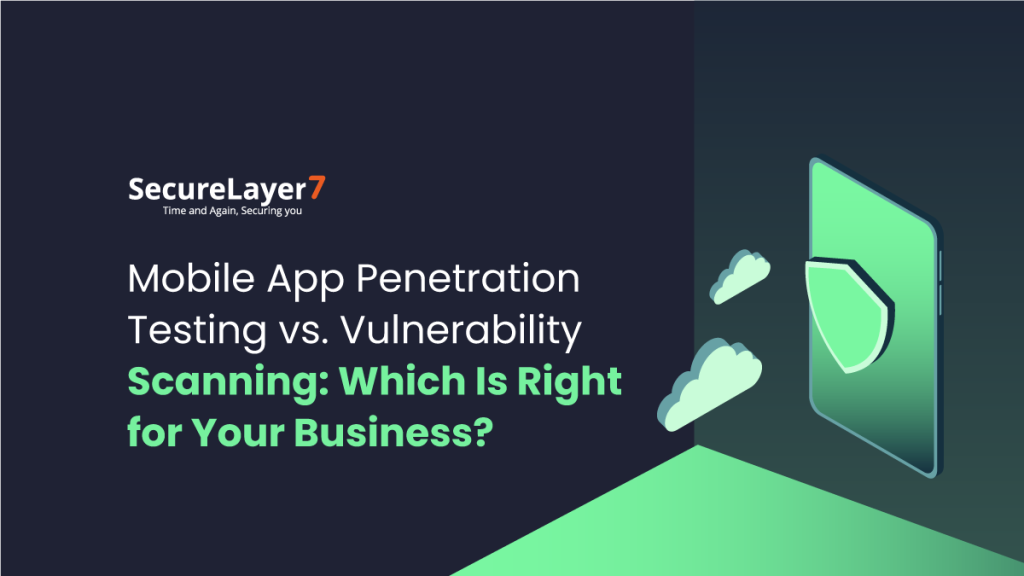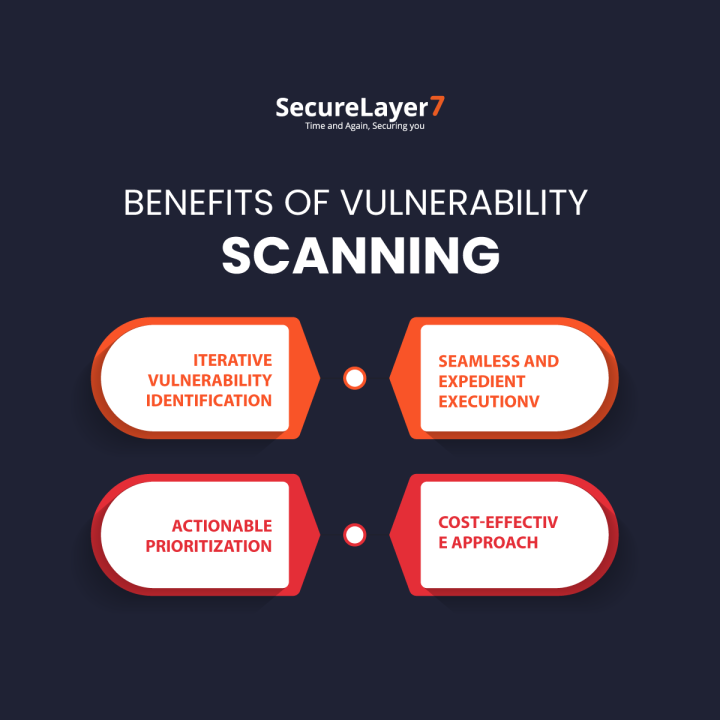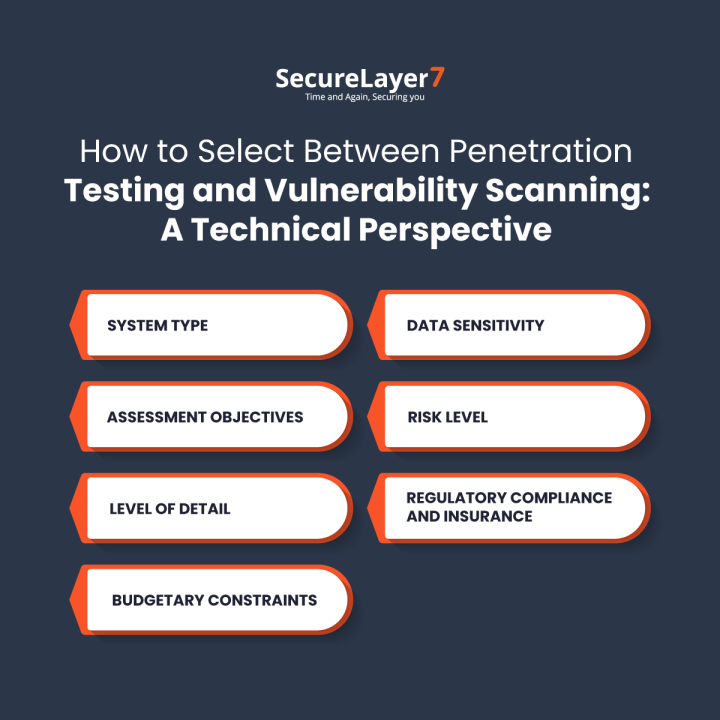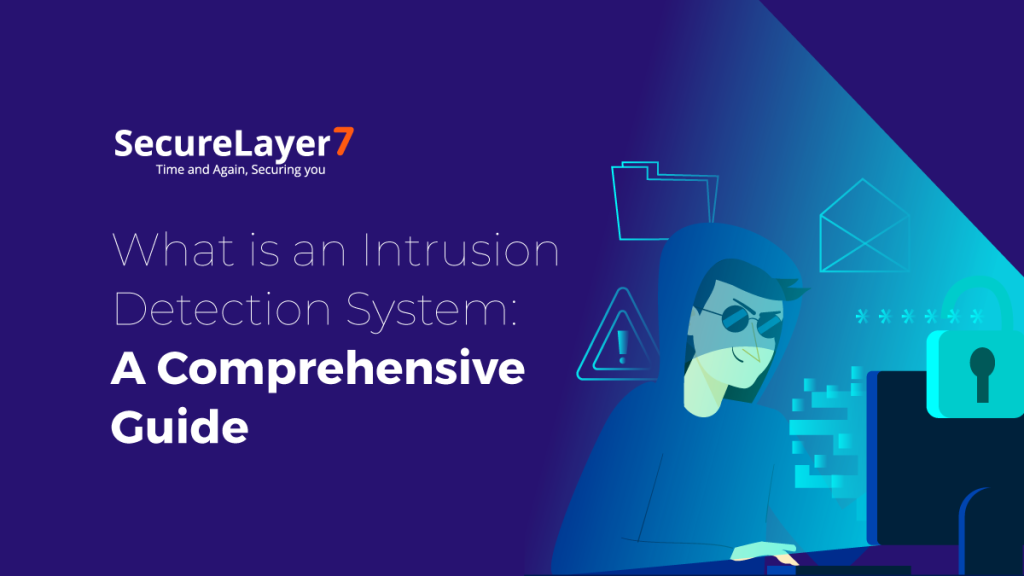
Cheap Pentesting For Bootstrapped Startups
July 5, 2023
Cybersecurity in Healthcare, Challenges & Regulations
July 20, 2023
In today’s media landscape, the recurring occurrence of companies succumbing to cyber attacks is a daily reminder of the pervasive threat. As a discerning business leader, you know that your organization is not immune to such perils. Therefore, it becomes imperative to proactively fortify your defenses and undertake the requisite security measures to safeguard your invaluable data assets. This needs a deep understanding of Penetration Testing vs. Vulnerability Scanning.
Penetration testing and vulnerability scanning are two distinct approaches to identify potential weaknesses within your applications and network infrastructure that malicious actors could exploit. Each approach offers unique advantages and merits. Thus, the crucial question arises: which is the ideal choice for your business? Alternatively, should you consider implementing both in your security repertoire?
This comprehensive exposition aims to unravel these difficulties and equip you with the necessary insights. Throughout this article, we will explore the following key aspects:
Defining Penetration Testing:
Penetration testing, often called a pen test, is an intricately crafted exercise of simulating adversarial attacks to uncover system vulnerabilities susceptible to exploitation by potential hackers.
The role of executing penetration tests predominantly lies with proficient individuals recognized as white hat hackers. While these practitioners employ methodologies akin to their malicious counterparts, their intent is far from malicious. Instead, they conduct these tests with explicit consent and the overarching objective of enhancing the fortification of your corporate network security infrastructure.
Penetration testing serves as a valuable source of insight into several key aspects:
- Assessment of attack probability: It involves evaluating the visibility and attractiveness of your business as a potential target for cyber attacks. Additionally, it aids in determining the types of attacks that are most probable to be encountered.
- Evaluation of attack feasibility: This entails assessing the likelihood of an attacker successfully exploiting a discovered vulnerability. By gauging the potential success rate, organizations can better comprehend the level of risk associated with specific vulnerabilities.
- Analysis of attack impact: The objective here is to comprehend the potential consequences that could arise from exploiting a vulnerability. By understanding the impact, organizations can gauge the severity of an attack and the potential damage it may cause.
- Development of optimal protective measures: Once likely attack vectors and specific vulnerabilities have been identified, this phase focuses on formulating and implementing effective countermeasures. The aim is to enhance the organization’s security posture and minimize the likelihood of successful attacks or mitigate their potential impact.
Internal penetration tests are performed by the in-house cybersecurity division of your organization, while outsourcing to experts is an alternative approach. The execution of these tests can take place through manual intervention or by leveraging automated tools.
Advantages of Penetration Testing:
- Unparalleled comprehensiveness: Penetration tests exhibit thoroughness that surpasses conventional vulnerability scans. While vulnerability scans focus on identification, penetration tests delve deeper by emulating actual intrusion attempts. Through such endeavors, these tests effectively evaluate the plausibility and probability of exploitation, furnishing you with an exhaustive appraisal of your cyber defense posture.
- Revelation of elusive vulnerabilities: Penetration testing is an indispensable tool in unearthing vulnerabilities that may elude detection through alternative methods. Certain intricacies inherent in a system’s security fabric can only be discerned by actively attempting to exploit them. By replicating genuine attacks against your network, penetration testing illuminates avenues of insight that conventional approaches fail to offer.
Challenge of Penetration Testing
Cost Considerations: The expenses associated with penetration tests can be substantial. Whether opting for in-house cyber security experts or engaging a security vendor, conducting a comprehensive penetration test incurs financial investments. Moreover, proficiency in advanced hacking techniques and utilization of specialized tools further escalates the costs.
To elevate your organization’s cyber security posture, penetration tests offer an elevated level of assurance. Through their execution, vulnerabilities can be proactively identified and remediated before potential exploitation.
Defining Vulnerability Scan
A vulnerability scan is an integral part of proactive security measures to assess the susceptibility of a computer system or network to known vulnerabilities. This systematic procedure involves a meticulous examination conducted through automated mechanisms employing diverse tools. The primary objective of such scans is to detect and identify potential weak points in systems or applications that malicious entities may exploit.
Vulnerabilities can manifest as flaws within the software, hardware, or firmware, presenting opportunities for unauthorized access, unauthorized control, or data theft. It is worth noting that vulnerability scans, akin to penetration testing, can take p internally within an organization or companies can outsource to a Security Services Provider. Within business networks, two distinct types of vulnerability scans exist: internal and external. While both variations provide invaluable insights for risk mitigation, it is crucial to recognize that they differ in their scope and approach.
Distinguishing Internal and External Vulnerability Scanning
Internal vulnerability scanning entails the execution of comprehensive analyses from within your network infrastructure to detect susceptible systems or applications prone to potential attacks. By scrutinizing various endpoints, these scans offer an elevated level of vulnerability assessment, meticulously examining factors such as outdated software versions, insufficiently applied patches, and other potential weaknesses.
On the other hand, external vulnerability scanning involves systematically inspecting your organization’s network architecture from an external standpoint. These scans specifically target externally accessible entry points, aiming to uncover potential weaknesses that could be exploited by an attacker originating from the internet. This external perspective grants valuable insights into the vulnerabilities of the online realm.
Benefits of Vulnerability Scanning:

- Iterative Vulnerability Identification: Vulnerability scanning enables periodic and systematic assessments to detect emerging vulnerabilities. This iterative process ensures awareness of new security weaknesses, promoting proactive measures to address them promptly.
- Seamless and Expedient Execution: Vulnerability scans are conducted swiftly and seamlessly, ensuring minimal disruption to business operations. This efficiency allows organizations to maintain operational continuity while proactively managing their security posture.
- Actionable Prioritization: The results obtained from vulnerability scans offer valuable insights for prioritizing remediation efforts. By analyzing the scan findings, organizations can strategically allocate resources to address the most critical vulnerabilities, optimizing their risk mitigation strategies.
- Cost-Effective Approach: Vulnerability scanning provides a cost-effective solution for assessing security vulnerabilities. With the relatively low financial investment required, organizations can leverage this scanning technique to identify and address vulnerabilities without incurring significant expenses.
Challenges of Vulnerability Scanning
- Inadequate assessment of attack feasibility, likelihood, and potential business impact: Vulnerability scans frequently fall short in accurately evaluating the feasibility and probability of an attack and the potential consequences for an organization. This limitation arises due to the absence of contextual understanding regarding the system under examination, such as the intricacies of the network infrastructure or the nature of the safeguarded data.
- Incomprehensive vulnerability detection: Automated scanning methods cannot unearth every vulnerability present within a system. Certain vulnerabilities defy detection via automated scans and can solely be discerned through manual inspection, which demands human expertise and analysis.
To overcome these challenges, vulnerability scans are commonly complemented by penetration tests. By employing both assessment forms, organizations can attain a holistic view of their security risks, gaining deeper insights into potential vulnerabilities and the associated implications.
Penetration Testing Vs. Vulnerability Scanning
When assessing a system’s security, understanding the differnece between penetration testing and vulnerability scanning is crucial. Although these terms may seem esoteric to non-IT professionals.
Let’s understand this with help of an example:
Envision yourself surveying the boundaries of your property, meticulously inspecting for breaches in the fence.
During a vulnerability scan, your focus would be identifying and documenting any existing holes for remediation.
On the other hand, a penetration test goes beyond mere identification. In this scenario, you detect the hole and endeavor to exploit it. This entails gauging its attractiveness as an entry point, determining its exploitability, and ascertaining the potential ramifications if an unauthorized individual were to breach it successfully.
How to Select Between Penetration Testing vs. Vulnerability Scanning: A Technical Perspective?

Determining the optimal choice for your business – Penetration Testing vs. Vulnerability Scanning – necessitates thoroughly evaluating specific requirements, security risks, and financial considerations. Consider the following factors:
- System Type: Like web applications, certain systems are more susceptible to attacks. If you are accountable for securing a targeted system, conducting a penetration test becomes imperative to identify all potential vulnerabilities.
- Assessment Objectives: Do you have interest in identifying common vulnerabilities exploitable by attackers, ensuring regular patch application, or obtaining a general overview of your security posture? A penetration test is the preferred option if your goal is a comprehensive assessment. In contrast, a vulnerability scan suffices for less extensive objectives.
- Level of Detail: Vulnerability scans offer a broad view of security risks, whereas penetration tests delve into specific vulnerabilities, providing intricate information.
- Budgetary Constraints: It is essential to consider the cost factor, as penetration tests typically incur higher expenses than internal and external vulnerability scans.
- Data Sensitivity: The significance of the data under protection influences the decision between a penetration test and a vulnerability scan. Highly sensitive data may require measures beyond mere vulnerability scanning.
- Risk Level: Different industries, system types, and data sets entail varying levels of risk. Conducting a penetration test for high-risk systems becomes imperative to unveil potential vulnerabilities comprehensively.
- Regulatory Compliance and Insurance: Compliance requirements or the pursuit of favorable rates on cyber liability insurance may necessitate periodic penetration tests or vulnerability scans.
Penetration testing and vulnerability scanning are indispensable tactics in the battle against cybercrime, rendering it unwise to view them as mutually exclusive. We recommend that companies conduct monthly internal vulnerability scans, external vulnerability scans quarterly, and annual penetration tests to ensure comprehensive security.
Conclusion:
The combination of vulnerability scanning and penetration testing can effectively enhance the robustness of application and network security, promoting an optimal security posture. Vulnerability scans, when conducted on a weekly, monthly, or quarterly basis, offer valuable insights into the security of your network. Your security team can efficiently prioritize its efforts by regularly assessing and categorizing risks through vulnerability scans. On the other hand, penetration tests provide a comprehensive evaluation of network security, mimicking the actions of real-world hackers while minimizing potential risks. Although penetration tests may involve higher costs, they ensure a meticulous examination of every aspect of your organization.
Both vulnerability scanning and penetration testing hold significant value within their respective domains. These services play a crucial role in cyber risk analysis. They are indispensable for compliance with regulations such as PCI and HIPAA, which are integral to various business processes. Contact SecureLayer7 today for a thorough assessment receiving actionable recommendations to fortify your business network.


